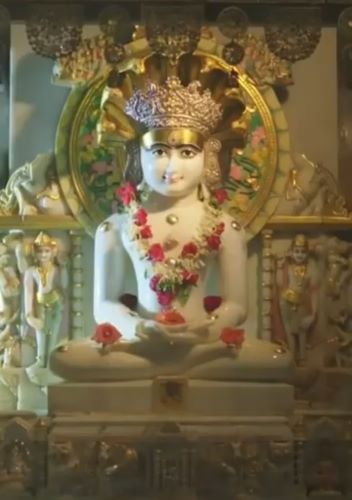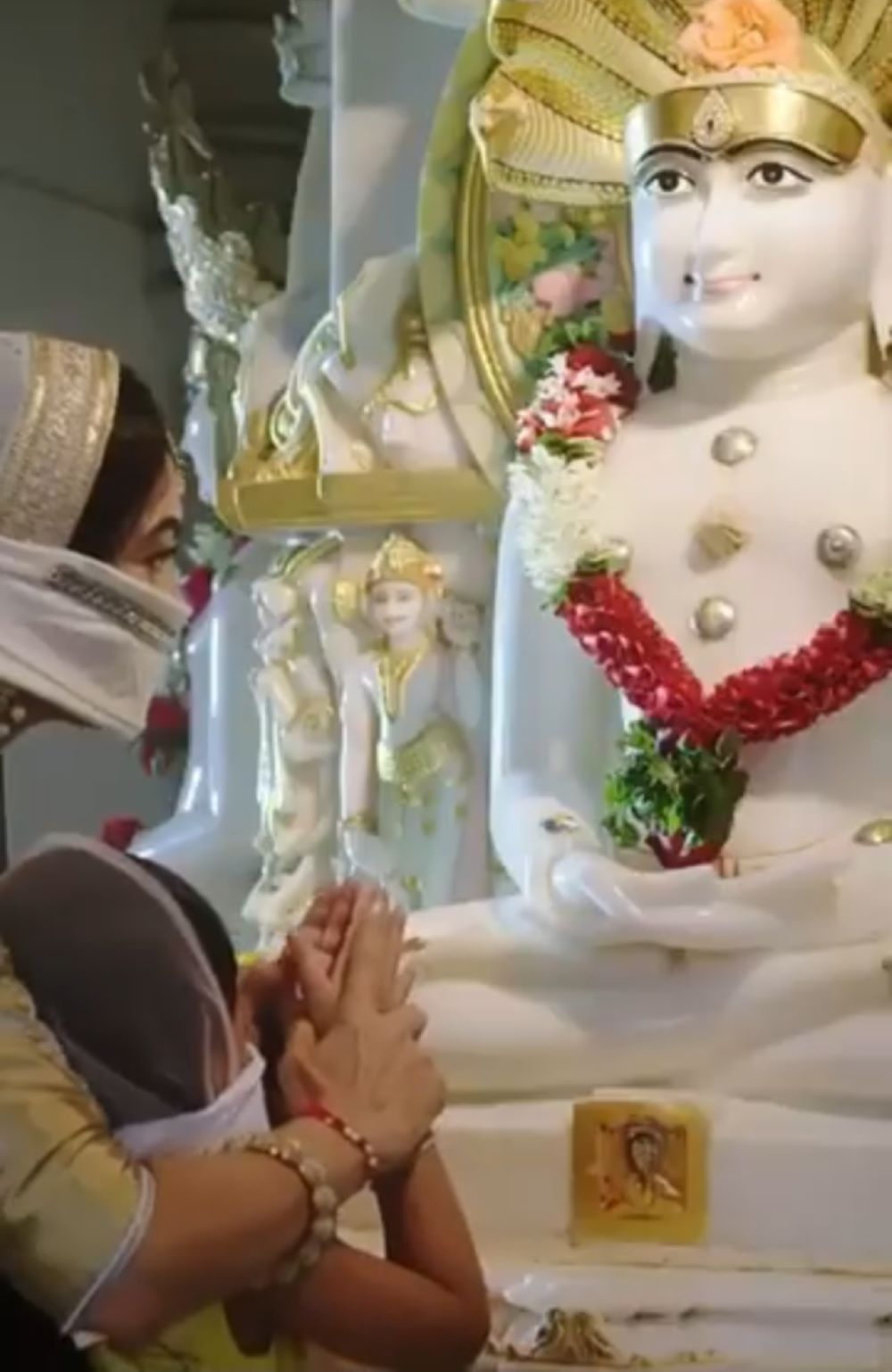
The Jain community in India and other countries of the world is celebrating Paryushan Mahaparva Festival from Aug 13 to 20, 2023
By Monica Vora
The history and values of Jainism formed the beginning of Paryushan Parva hundreds of years ago. Overtime, the festival has changed due to modern conveniences but the meaning has stayed the same. The origin of paryushan cannot be dated back to an exact moment as it began emerging as a tradition when modern Jainism began developing around the 6th century BCE. The history of this festival dates back to the agricultural lifestyles of India, centuries ago.
During this time, most individuals lived in modest and confined villages. Many regions of India can experience heavy rainfall during the monsoon season, and farmers and workers would often be compelled to refrain from their agricultural work at this time. The poor weather would make it challenging to travel on roads. The main principle in Jainism is ahimsa, which means non-violence towards all living creatures. The added moisture caused an increase in the number of insects and bugs in the environment, making it extremely difficult to travel without harming them.
During this time, sadhus and sadhvis tended to stay in their villages and spend their extra time celebrating their religion. The monsoon marked a period when these monks would focus on themselves internally by cleansing their souls and advancing their knowledge. Originally, Jain monks practiced this tradition during the full chatursma time period which lasted 70 days. They would spend their days meditating and practicing vrats (acts of self-control). In today’s age most followers have moved away from the small ancient villages of their ancestors yet Jain practices are still valued and practiced in modern society. As life became more urbanized, Jains worldwide found it increasingly difficult to practice the main principles of Jainism to their fullest everyday.
The word “Jainism” is derived from the word “conquer,” which refers to fighting against one’s passions and pleasures using self-restraint and control. The main principles of Jainism are non-violence, non-absolutism, and non-possessiveness. As the world became more advanced, lifestyles changed from simple to more complex. People moved away from their remote villages to cities where they would be presented with numerous temptations and added luxuries. Due to new conveniences, individuals found that the main doctrines of Jainism were beginning to fade away. Thus, the religious ritual Jain monks practiced during chatursma evolved into a festival that started being celebrated by Jain followers.
 The word “Jainism” is derived from the word “conquer,” which refers to fighting against one’s passions and pleasures using self-restraint and control.
The word “Jainism” is derived from the word “conquer,” which refers to fighting against one’s passions and pleasures using self-restraint and control.
This eight-day festival inspires Jains worldwide to remember the roots and philosophies of Jainism. Celebrating paryushan also brings a social purpose as well. During the festival family and friends all come together for a cause. Though the ritual of paryushan pushes followers to abide by the main doctrines of Jainism, it specifically targets five required principles. These essentials separate and make paryushan unique from other Jain holidays.
The first principle is called sadharmik vatsalya, which means that all individuals should show love and gratitude not only to all Jains but to all living beings. This concept is often shown through actions that assist others. By conducting such actions, individuals can do their part and lead others on the proper pathway. The next principle touched upon is ahimsa, also called amari pravatan, which means to be non-violent in all aspects of one’s daily life. This includes thinking and speaking with pure intentions. Third, is atthama taap, which asks followers to practice self-control by fasting for three days or eating simple tasteless foods. This is meant to strengthen one’s willpower as he is forced to face a bit of discomfort. Chaitya paripati translates to pilgrimage to holy places.
This principle should be completed by followers as it shows devotion and respect to the faith. Lastly, kshamapana, means to ask for forgiveness from all the beings that may have suffered as a result of one’s actions. Jains believe strongly that it is important to forgive those who may have hurt us for their shortcomings and weaknesses. These five principles have provided the basis and foundation for this festival throughout history. Jains follow a set of rules in order to fulfill the five target principles of Jainism. Sunlight is a natural disinfectant and thus the level of bacteria in the atmosphere is less during the daytime than at night; therefore, Jains avoid eating between dusk and dawn. Jains avoid root vegetables like onions and garlic, as in order to eat these vegetables, one must destroy the entire plant.
By eating before sunset and avoiding vegetables that grow underground, Jains practice amari pravartan as they are non-violent. During this holy period, monks and individuals spend their evenings at their local temples, as chaitya paripati is one of the main principles. However, since the underlying purpose of paryushan is to show one’s self control, during the day they do not have to go to a place of worship for the ritual. They can simply pray and reflect in the peace of their own homes.
Throughout history, the main goals of paryushan have remained the same as those of the tirthankars who started practicing this tradition. However, since the external environment has changed overtime the way individuals go about the festival is different. In the past, people would avoid their “greed for gold” or be more mindful of their water consumption. Now, in modern society, people practice taap by avoiding modern conveniences such as cellphones, televisions, and laptops. These are just a few actions Jains are asked to follow in order to stay focused on the purpose of paryushan . Though the entire festival is dedicated to soul purification and self-searching, each of the eight days of the annual ritual has its own specific dedication. The first day of paryushan is known as the day when individuals focus on clearing their minds of daily worldly thoughts. This day is important because it puts followers on the right step by clarifying their thoughts.
The second day inspires people to donate to their local places of worship or to important worldwide causes. With each person conducting small acts of kindness, the world becomes a better place. The third day focuses on connecting the mind to the soul by practicing meditation for enlightenment. On the fourth day, Jains believe they receive well wishes and protection from the Goddess Laxmi by conducting a puja and offering her sweets. The fifth day is also known as “The Day of the Kalpasutra.” This is the day when people celebrate the Mahavir’s birth by organizing a boli (religious auctions) of the 14 silver statues of the dreams of Mahavir’s mother, Trishla Devi, when she was pregnant with him. The money from the boli is given and donated to the religious institution. The sixth and seventh days are the days of tolerance and endurance. Since many fast for the entire festival, these days are supposed to instill them with the strength to keep going on their spiritual journey.
The eighth and final day is titled, samvatsari, which translates to the “Gateway of Salvation”. It is the holiest day of the entire Jain calendar and also International Forgiveness Day. On this day, Jains observe a unique custom, when they utter the words micchammi dukkadam. This day marks the start of the Jain New Year, with Jains striving to start on a clean slate. On samvatsari, Shwetambar Jains also practice pratikraman in the evening where they continuously pray for four hours. During this time period, they honor the tirthankars and their gurus.
The rituals ends with a prayer called moti shanti, which hopes for global peace. Overall, it is apparent that the religious holiday of paryushan is highly important for Jain followers as many Jain beliefs are incorporated and woven through the festival. In early Jain history, individuals were unable to travel without harming living beings, which sparked the beginning of the festival. In modern times, many followers find themselves filled with many daily commitments which may cause them to drift away from their spirituality.
The festival of paryushan allows individuals to slow down and think about their righteousness. From researching this practice to visualizing it with my own eyes, I realized how important this festival is to followers since it only comes one a year. In a fast paced, highly technological world, I believe the need for paryushan is greater. We are consistently wanting more and more. These historical Jain traditions used by the tirthankars is a great way for individuals in today’s world to rid of their bad karma and sins they accumulate over the year. This is very significant, as many religions do not end the year with a tradition such as this one. I look forward to seeing how this festival continues to flourish over the years and see how it develops over ongoing generations.
_________________
Courtesy: Young Jains of America (YJA)